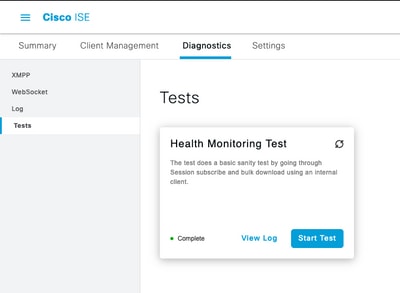

Policy > Policy Elements > Results > Authorisation > Downloadable ACL’s > Add.Ĭreate an ACL for our VPN-USER group, that will only allow RDP (TCP 3389) > Submit.

Petes-ASA(config-aaa-server-host)# radius-common-pw 123456Ĭisco ISE Create Downloadable Access Control Lists DACL Petes-ASA(config-aaa-server-host)# key 123456

Petes-ASA(config-aaa-server-group)# aaa-server Cisco-ISE host 192.168.100.11 Petes-ASA(config)# aaa-server Cisco-ISE protocol radius The shared secret must be the same on the ASA in the AAA config, like so MAKE SURE you select ‘Treat as if the user was not found and proceed to the next store in the sequence’ > Submit.Īdd Cisco ASA to Cisco ISE as a RADIUS Device.Īdministration > Network Resources > Network Device Groups > All Device Types > Add.Īdd a device GROUP for your ASA(s) > Submit.Īdministration > Network Resources > Network Devices > Add.Īdd in the ASA > Provide its IP address, and add it to the group you created above > Set a RADIUS Shared Secret > Submit. Give the sequence a name and add your AD and Internal Users. Administration > Identity Management > Identity Source Sequence > Add. To do that we use and identity source sequence. We need to authenticate against our AD, but we want it to fail back to the ISE local database, (for our local admin). Locate and add the groups you created above.Īdd An Active Directory Identity Source Sequence I’m assuming you have joined ISE toActive Directory > To check Administration > Identity Management > External Identity Sources > Ensure the domain is joined and operational.
#Cisco ise 2.4 admin node replacement password
To create an admin user > Administration > Identity Management > Identities > Add.Ĭreate the new admin user > set the password > add the user to the group you create above. Give the group a name and optional description > Save.

On your Cisco ISE Deployment > Identity Management > Groups > Add. Tunnel-group VPN-USERS general-attributes Tunnel-group VPN-USERS type remote-access Tunnel-group VPN-ADMINS webvpn-attributes Tunnel-group VPN-ADMINS general-attributes Tunnel-group VPN-ADMINS type remote-access Tunnel-group ANYCONNECT-PROFILE webvpn-attributes Tunnel-group ANYCONNECT-PROFILE general-attributesĭefault-group-policy GroupPolicy_ANYCONNECT-PROFILE Tunnel-group ANYCONNECT-PROFILE type remote-access Split-tunnel-network-list value SPLIT-TUNNELĪnyconnect profiles value PNL-Profile type user Group-policy GroupPolicy_ANYCONNECT-PROFILE attributes Group-policy GroupPolicy_ANYCONNECT-PROFILE internal So what I’ve done is setup An圜onnect and configured it properly, (see article below) then I’ve simply ‘ cloned‘ the tunnel group, and group policy to create a VPN-ADMIN and VPN-USERS tunnel-group ,and a group-policy. That way, when a user connects they can pick the appropriate tunnel group like so Now you will also need a ‘Tunnel-Group and a matching Group-Policy on the ASA to map the user groups to. Then put those users in an appropriate Active Directory security group, (here I’m using VPN-Users and VPN-Admins). In production you will have plenty of users, but to test Im going to create a test user, and a test admin user.
#Cisco ise 2.4 admin node replacement full
I always assume things will break, so I’m also going to create a local user on the ISE deployment, so if Active Directory is down I will have a user account I can use to gain full access in the event of an emergency. I’m going to keep things simple, I will have a group for admins that can access anything, and a group for users that can only RDP to internal servers. To be honest it’s probably a LOT easier to do this with Dynamic Access Policies, but hey, if you have ISE then why not use it for RADIUS, and let it deploy downloadable ACL’s to your remote clients and give them different levels of access, based on their group membership. An圜onnect Group Authentication With Cisco ISE and Downloadable ACLs (Part 1)


 0 kommentar(er)
0 kommentar(er)
